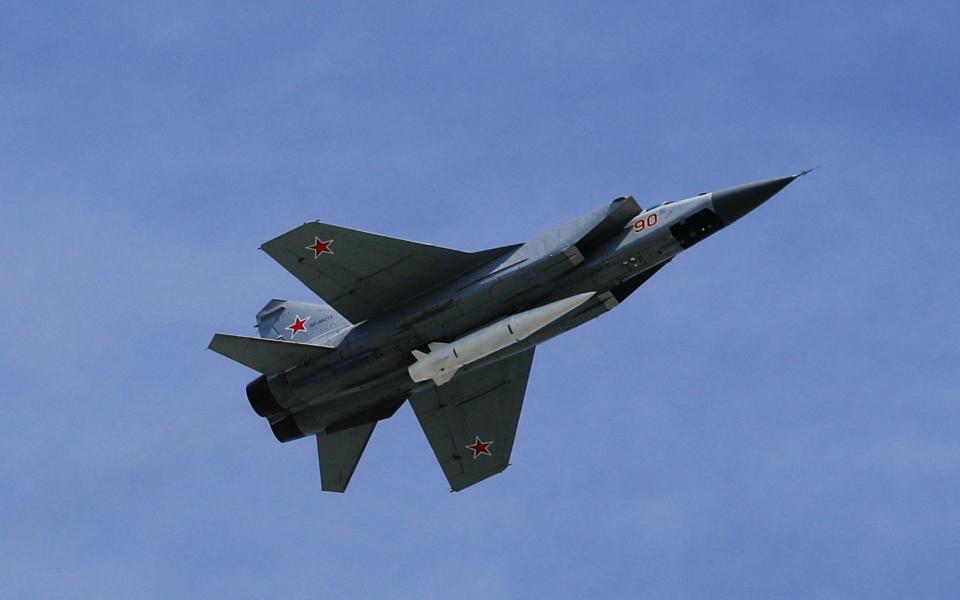Putin’s ‘invincible’ hypersonic missiles could soon be intercepted

An interceptor capable of taking down Vladimir Putin’s “invincible” hypersonic missiles is being developed by an Anglo-French business, as the West races to counter new technology developed by the Kremlin.
The protective system could be deployed across Europe to take down the missiles, which move at a reported 6,900mph and are meant to be unstoppable using existing defences. It is being developed by a team led by MBDA, part-owned by the UK’s BAE Systems.
The company has early-stage deals with France, Italy, Germany and the Netherlands to come up with a prototype in the next three years as efforts to defend against the threat heat up.
Typical rockets fly at about Mach 3, while hypersonics travel at a minimum of Mach 5, about 3,800mph, or five times the speed of sound, or even faster.
As well as being incredibly fast, they have an unpredictable flight path that makes them hard to track.
Weapons developed by the Kremlin include the 3M22 Zircon, an anti-ship missile described by Mr Putin as “invincible” in 2018. It was tested last year by a Russian warship.
China reportedly fired a hypersonic projectile around the globe in a test in 2021.
Ships are thought to be particularly vulnerable to attack, especially if they face a number of the weapons at once – posing a major threat to the aircraft carriers that the West uses to project power across the world.
British companies including Qinetiq and Cohort are also working on solutions to the challenge, with Qinetiq attempting to use a laser weapon dubbed “dragonfire” to shoot down the missiles.
The Israeli defence firm Rafael is working on a new “Sky Sonic” system that is specifically designed for intercepting hypersonic missiles.
There were hopes the missiles were not what they were cracked up to be when in May Ukraine claimed to have destroyed half a dozen KH-47M2 Kinzhal missiles – another Russian hypersonic – using anti-missile systems widely assumed to be Patriot batteries loaned to Kyiv by America.
Russia said the claim was false, but the weapon is an early version and later models will be harder to dispatch.
The weapons typically fall into two categories – a powered variant which uses a particularly fast type of jet engine called a scramjet, or a projectile launched from high in the sky that bounces off the atmosphere to reach its target.
Either way, to develop a good defence against these weapons, a system must monitor a much larger area to detect and intercept them.
The only concession the missiles offer is that they are comparatively delicate because of the huge amounts of heat they must manage.
To destroy them, they can be hit directly, which is the hardest method because of the speed of the missile; they can be hit by a missile with a blast radius, which is messier because shrapnel and debris brings the danger of more destruction; or energy weapons can be used.
These can theoretically work by turning the missile into a large antenna and corrupting the electronics inside.
Eric Béranger, chief executive of MBDA, said the project will “contribute to reinforcing the sovereign missile systems industry in Europe, by sustaining and developing critical expertise, technologies and materials; thus boosting European industrial competitiveness”.
He added: “The technologies in the hypersonic domain are evolving, and it is a priority for MBDA to remain at the forefront of innovation, guiding Europe towards the most efficient solution to counter hypersonic threats.”
